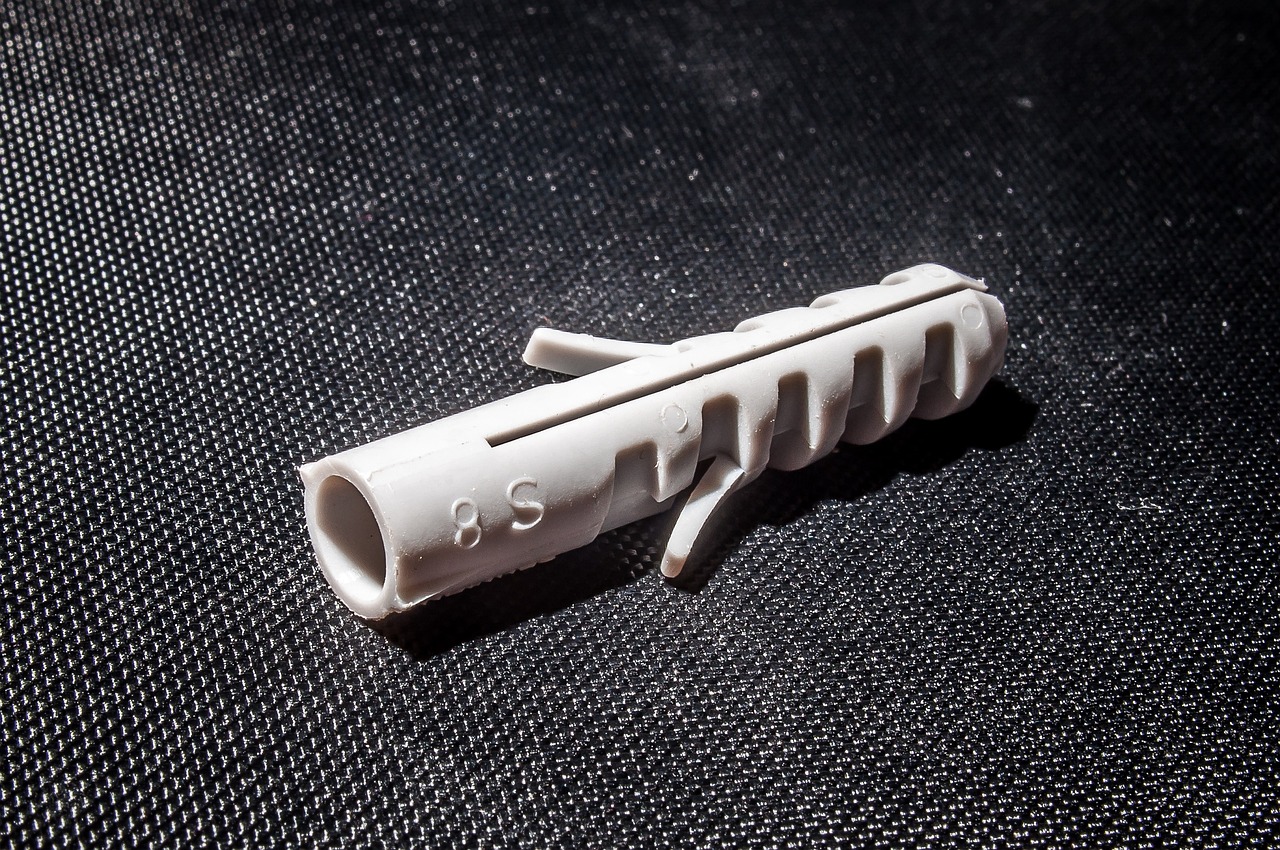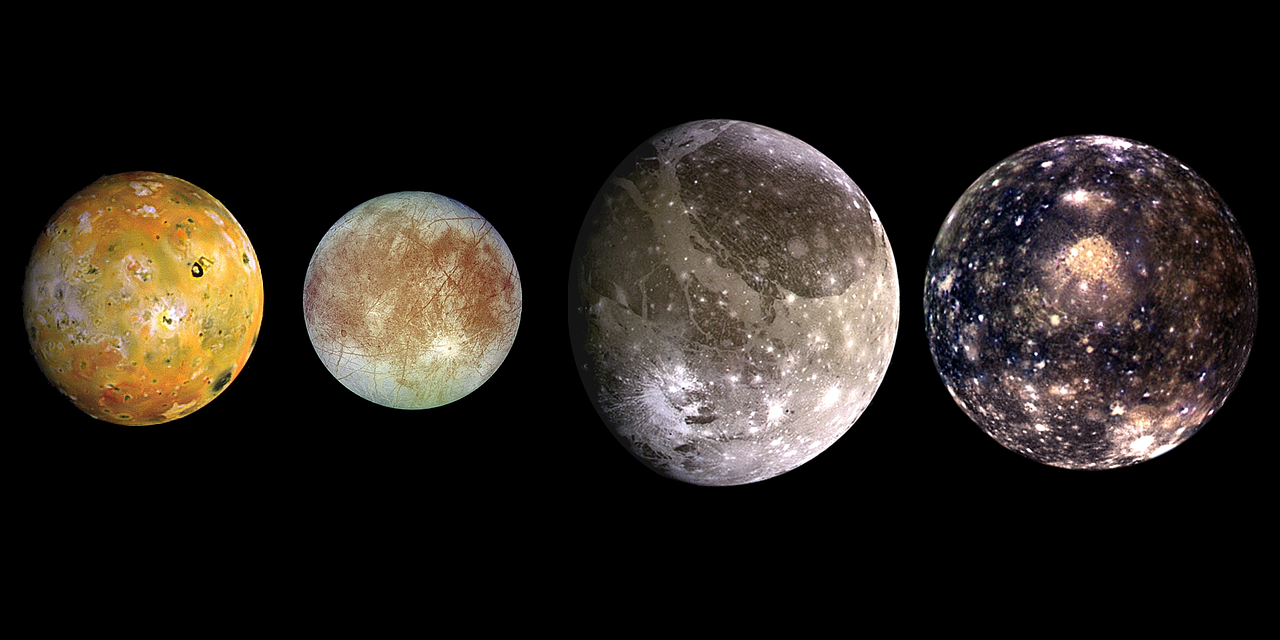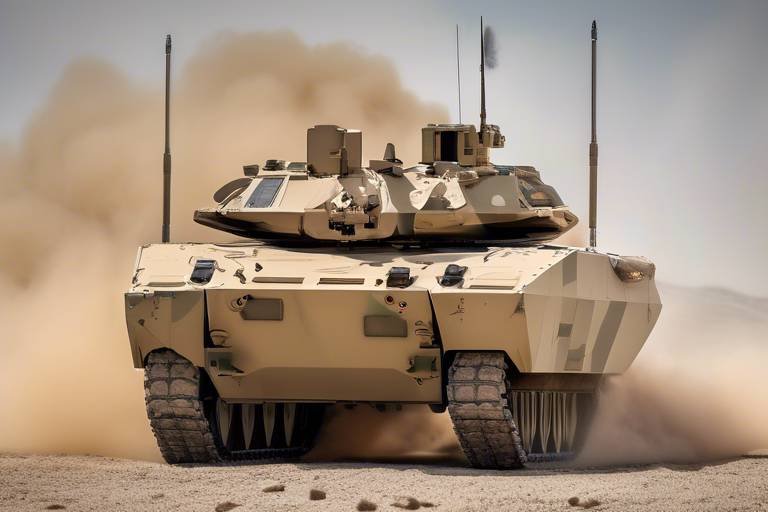Exploring the Capabilities of the Aegis Combat System
The Aegis Combat System stands as a pinnacle of modern naval warfare technology, representing a significant leap in how maritime forces protect themselves and assert dominance over the seas. Imagine a high-tech fortress floating on the ocean, capable of detecting and neutralizing threats before they even come close. This system is not just about defense; it's about ensuring that naval forces can operate with confidence in an increasingly complex and hostile environment. With its sophisticated integration of radar, weapons, and command systems, the Aegis Combat System embodies the essence of modern military strategy, where speed, accuracy, and coordination are paramount.
At its core, the Aegis system is designed to provide a comprehensive shield against a variety of threats, from incoming missiles to hostile aircraft. It employs cutting-edge technology that allows for real-time data processing and decision-making, ensuring that naval forces can respond to threats with unparalleled speed and precision. The Aegis system is not just a tool for combat; it serves as a vital component in enhancing maritime security, contributing to the stability of global waters. As we delve deeper into its components and capabilities, we will uncover how Aegis not only protects but also empowers naval operations in the 21st century.
The Aegis Combat System is a sophisticated naval weapon system designed to provide integrated air and missile defense, employing advanced radar and tracking technologies to ensure naval superiority. Think of it as the brain of a ship, orchestrating a symphony of sensors and weapons to create a cohesive defense mechanism. With the ability to track hundreds of targets simultaneously, Aegis transforms naval vessels into formidable adversaries, capable of countering threats from the air and sea with remarkable efficiency.
Aegis consists of several critical components, including the AN/SPY-1 radar, the Aegis Weapon System (AWS), and the Command and Decision system, all working in unison to enhance operational effectiveness. Each element plays a crucial role in the overall functionality of the system, ensuring that naval forces can adapt to a variety of combat scenarios. The integration of these components is what makes Aegis a standout system in modern naval warfare.
The AN/SPY-1 radar is a multifunctional phased-array radar that enables simultaneous tracking of multiple targets, providing real-time data for effective decision-making and engagement in combat scenarios. Imagine a hawk soaring high above, spotting every movement below with unmatched clarity. This radar system allows naval forces to maintain situational awareness, ensuring that they are always one step ahead of potential threats.
The radar's tracking capabilities allow for precise targeting of airborne threats, ensuring that naval forces can respond swiftly to potential dangers in their operational environment. With the ability to differentiate between friendly and hostile targets, Aegis ensures that the right decisions are made at the right time, minimizing the risk of friendly fire and maximizing the effectiveness of engagements.
Advanced data processing algorithms enhance the radar's ability to filter and prioritize threats, allowing for efficient allocation of resources during complex engagements. In a world where milliseconds can determine the outcome of a battle, this capability is invaluable. The Aegis system essentially acts as a filter, sifting through vast amounts of data to present only the most critical information to decision-makers.
The Aegis Weapon System integrates various weapon platforms, enabling ships to engage a wide range of threats, from aircraft to missiles, ensuring comprehensive defense capabilities. Picture a well-coordinated team of archers, each with a different type of arrow, ready to respond to any threat that approaches. This flexibility allows naval forces to adapt to evolving combat situations, making Aegis a versatile and powerful asset in naval operations.
The Aegis Combat System's operational capabilities extend to anti-air warfare, ballistic missile defense, and surface warfare, making it a versatile tool for modern naval forces. Each capability is not just a standalone feature; they work together to create a robust defense network that can adapt to various threats. Aegis is not just about reacting to threats; it's about anticipating them and acting before they become a danger.
Aegis excels in anti-air warfare, utilizing its advanced radar and weaponry to detect, track, and engage enemy aircraft effectively, safeguarding naval assets from aerial threats. This capability is akin to having a vigilant guardian, always on the lookout for any signs of danger from above. With Aegis, naval forces can operate with the confidence that they have a reliable defense against aerial incursions.
The system plays a crucial role in ballistic missile defense, employing sophisticated tracking and interception technologies to protect naval and allied forces from missile attacks. Imagine a skilled archer who can not only see the arrow coming but also has the ability to shoot it down mid-flight. This is the level of protection that Aegis provides, ensuring that naval forces are not just reactive but proactive in their defense strategies.
Integration with other military systems enhances Aegis's effectiveness, allowing for coordinated operations and improved situational awareness across various branches of the armed forces. The ability to share information and resources is essential in modern warfare, where the battlefield is more interconnected than ever.
Aegis supports joint operations by sharing critical data with allied forces, ensuring a unified response to threats and enhancing overall mission success. This cooperation is like a well-rehearsed dance, where every participant knows their role and can react seamlessly to changes in the environment.
The system's capabilities are further enhanced by network-centric warfare principles, enabling real-time communication and information sharing among naval units and command centers. This interconnectedness ensures that all units are on the same page, allowing for rapid decision-making and execution of strategies.
The future of the Aegis Combat System includes advancements in technology, such as artificial intelligence and enhanced missile defense capabilities, ensuring continued relevance in modern naval warfare. As threats evolve, so too must the systems designed to counter them. Aegis is committed to staying ahead of the curve, integrating cutting-edge technologies to enhance its operational capabilities.
Integrating artificial intelligence will improve threat assessment and decision-making processes, allowing for faster and more accurate responses in dynamic combat environments. Imagine having a tactical advisor who can analyze situations in real-time and provide recommendations based on vast amounts of data. This capability will revolutionize how naval forces operate, making them more agile and responsive.
Developments in next-generation missiles will enhance the Aegis system's offensive and defensive capabilities, ensuring that naval forces remain a formidable presence in global waters. The evolution of weaponry is an ongoing journey, and Aegis is at the forefront, ready to adapt and incorporate the latest advancements to maintain its edge in naval warfare.
- What is the Aegis Combat System? The Aegis Combat System is an advanced naval weapon system designed for air and missile defense.
- How does the AN/SPY-1 radar work? The AN/SPY-1 radar uses phased-array technology to track multiple targets simultaneously.
- What types of threats can Aegis defend against? Aegis can defend against airborne threats, including missiles and enemy aircraft.
- How does Aegis integrate with other military systems? Aegis shares critical data with allied forces, enhancing situational awareness and coordination.
- What advancements are expected in the future for Aegis? Future developments include artificial intelligence integration and next-generation missile capabilities.

Overview of the Aegis Combat System
This article delves into the Aegis Combat System, its technological advancements, operational capabilities, and its role in modern naval warfare, highlighting its significance in enhancing maritime security.
The Aegis Combat System is a highly sophisticated naval weapon system that has revolutionized the way modern navies conduct operations. Designed primarily to provide integrated air and missile defense, the Aegis system employs cutting-edge radar and tracking technologies that ensure naval superiority in a variety of combat scenarios. Imagine a ship as a fortress on the sea, equipped with the most advanced tools for detecting and neutralizing threats before they can even get close. This is precisely what Aegis offers, transforming naval vessels into formidable defenders of maritime interests.
At the heart of the Aegis system is its ability to process vast amounts of data in real-time, allowing naval forces to maintain situational awareness and make informed decisions in the heat of battle. The system is not just a standalone entity; it integrates seamlessly with other military assets, enhancing operational effectiveness across the board. Whether it's tracking incoming missiles or coordinating with allied forces, Aegis serves as a command center that ensures every move is calculated and precise.
Furthermore, the Aegis Combat System is not limited to just one type of threat. It is designed to handle a wide array of challenges, including:
- Airborne threats: From enemy aircraft to drones, Aegis can track and engage multiple aerial targets simultaneously.
- Missile defense: The system is equipped to intercept ballistic missiles, providing a shield for naval and allied forces.
- Surface warfare: Aegis can also engage surface vessels, making it a versatile tool in naval combat.
In essence, the Aegis Combat System is a game-changer in naval warfare. Its sophisticated technology not only enhances the capabilities of individual ships but also contributes to the overall strength of a navy. With Aegis, naval forces can operate with greater confidence, knowing they have the tools needed to address a wide range of threats. As we delve deeper into the components and operational capabilities of Aegis, it becomes clear that this system is not just about defense; it’s about ensuring maritime security in an increasingly complex world.
Here are some common questions regarding the Aegis Combat System:
- What is the primary purpose of the Aegis Combat System? The Aegis Combat System is designed to provide integrated air and missile defense for naval forces, enhancing their operational capabilities.
- How does Aegis integrate with other military systems? Aegis can share critical data with allied forces, enabling coordinated operations and improved situational awareness across various branches of the armed forces.
- What future developments are expected for the Aegis Combat System? Future advancements may include artificial intelligence integration and next-generation missile capabilities, ensuring the system remains relevant in modern warfare.

Key Components of Aegis
The Aegis Combat System is a marvel of modern naval technology, and its effectiveness is largely attributed to its key components. Each element plays a vital role in ensuring that naval forces maintain superiority over potential threats in the maritime domain. The system is primarily composed of the AN/SPY-1 radar, the Aegis Weapon System (AWS), and the Command and Decision (C&D) system. Together, these components create a cohesive and powerful defense mechanism capable of addressing a wide array of threats.
At the heart of the Aegis system is the AN/SPY-1 radar, a multifunctional phased-array radar that stands out for its ability to track multiple targets simultaneously. This capability is crucial in modern warfare, where threats can emerge from various angles and at different speeds. The radar's advanced technology allows for real-time data processing, which is essential for effective decision-making during combat scenarios. Imagine being in a high-stakes game of chess, where every move counts, and having the ability to see all potential moves at once; that’s the advantage the AN/SPY-1 radar provides to naval commanders.
Next is the Aegis Weapon System (AWS), which integrates various weapon platforms into a single operational framework. This integration enables naval vessels to engage a multitude of threats, from enemy aircraft to incoming missiles. The AWS is designed to ensure that naval forces can respond quickly and effectively to any situation. For instance, if a hostile aircraft is detected, the system can seamlessly switch from tracking to engagement, showcasing its versatility and speed. This capability is akin to a well-rehearsed orchestra, where each instrument knows its role and timing, creating a harmonious and effective defense.
The Command and Decision (C&D) system is another critical component that ties everything together. It processes the data received from the AN/SPY-1 radar and other sensors, prioritizing threats and coordinating responses. This system acts like a brain, analyzing information and directing the appropriate actions to ensure operational effectiveness. In a fast-paced combat environment, the ability to quickly assess and respond to threats can mean the difference between success and failure.
In summary, the Aegis Combat System is a sophisticated blend of technology and strategy, with each component playing a crucial role in enhancing naval operational capabilities. The seamless integration of the AN/SPY-1 radar, AWS, and C&D system ensures that naval forces can maintain a strategic advantage in modern warfare. As threats evolve, so too will the Aegis system, continually adapting to meet the challenges of tomorrow’s battlefield.
- What is the primary function of the Aegis Combat System?
The primary function of the Aegis Combat System is to provide integrated air and missile defense for naval forces, ensuring protection against various aerial threats.
- How does the AN/SPY-1 radar work?
The AN/SPY-1 radar uses phased-array technology to track multiple targets simultaneously, providing real-time data for effective engagement and decision-making.
- What types of threats can the Aegis system engage?
The Aegis system is capable of engaging a wide range of threats, including enemy aircraft, missiles, and surface vessels, making it a versatile tool for naval defense.
- How does the Aegis system integrate with other military technologies?
The Aegis system integrates with other military technologies by sharing critical data and coordinating operations, enhancing situational awareness across different branches of the armed forces.

AN/SPY-1 Radar
The is a cornerstone of the Aegis Combat System, representing a leap forward in naval surveillance and engagement capabilities. This multifunctional phased-array radar is designed to track multiple targets simultaneously, providing naval forces with real-time data that is crucial for effective decision-making during combat scenarios. Imagine trying to catch a ball thrown from different directions all at once; that's what the AN/SPY-1 does but for airborne threats, making it an invaluable asset in modern warfare.
One of the standout features of the AN/SPY-1 is its ability to perform tracking and targeting with incredible precision. The radar can detect various airborne threats, including enemy aircraft and missiles, ensuring that naval forces can respond swiftly to any potential danger in their operational environment. This capability is vital, especially in high-stakes situations where every second counts. For example, if a hostile aircraft is detected, the radar can immediately relay the information to the Aegis Weapon System, enabling a rapid response.
Moreover, the radar's advanced data processing algorithms play a pivotal role in enhancing its effectiveness. These algorithms filter and prioritize threats, allowing naval commanders to allocate resources efficiently during complex engagements. Think of it as having a highly skilled assistant who sifts through mountains of information to highlight only the most critical details. This means that naval forces can focus on the most pressing threats, ensuring a higher chance of mission success.
To illustrate the capabilities of the AN/SPY-1 radar, let's take a look at the following table that summarizes its key features:
| Feature | Description |
|---|---|
| Type | Multifunctional phased-array radar |
| Tracking Capability | Simultaneous tracking of multiple targets |
| Response Time | Real-time data processing for immediate engagement |
| Data Processing | Advanced algorithms for threat filtering and prioritization |
In summary, the AN/SPY-1 radar is not just a piece of technology; it is a game-changer in naval operations. Its ability to track multiple targets, coupled with advanced data processing capabilities, ensures that naval forces are always a step ahead of their adversaries. As threats evolve, so too does the AN/SPY-1, continuously adapting to meet the challenges of modern warfare.
- What is the primary purpose of the AN/SPY-1 radar?
The primary purpose is to provide integrated air and missile defense by tracking multiple airborne targets simultaneously. - How does the AN/SPY-1 improve decision-making in combat?
It processes real-time data and prioritizes threats, allowing for swift and accurate responses to potential dangers. - Can the AN/SPY-1 radar track both aircraft and missiles?
Yes, it is designed to track a wide range of airborne threats, including both aircraft and missiles.

Tracking and Targeting
The Aegis Combat System's tracking and targeting capabilities are nothing short of revolutionary, acting as the backbone of modern naval defense. Imagine a hawk soaring high above, its keen eyes scanning the horizon for any signs of movement. This is precisely how the AN/SPY-1 radar operates, utilizing its advanced phased-array technology to monitor a vast area for potential threats. With the ability to simultaneously track multiple targets, the radar provides naval forces with real-time data that is crucial for effective decision-making in the heat of battle.
One of the standout features of the Aegis system is its ability to engage airborne threats with pinpoint accuracy. When an enemy aircraft or missile is detected, the system springs into action, calculating trajectories and predicting the target's movements. This is akin to playing an intricate game of chess, where every move is calculated, and anticipation is key. The radar uses sophisticated algorithms to filter through the noise, prioritizing threats based on their potential danger level. This ensures that the most pressing threats are addressed first, allowing naval forces to allocate their resources efficiently during complex engagements.
Moreover, the integration of advanced data processing techniques enhances the Aegis system's overall effectiveness. By employing machine learning and artificial intelligence, the system continuously improves its tracking capabilities, adapting to new threats and operational environments. The result is a highly responsive and agile defense mechanism that can keep pace with the ever-evolving landscape of modern warfare. In essence, the Aegis Combat System transforms naval vessels into formidable sentinels of the sea, capable of responding swiftly and decisively to any threat that looms on the horizon.
To illustrate the effectiveness of the Aegis system in tracking and targeting, consider the following table that summarizes its capabilities:
| Capability | Description |
|---|---|
| Simultaneous Tracking | Tracks multiple airborne and surface targets in real-time. |
| Threat Prioritization | Filters and prioritizes threats based on their potential impact. |
| Real-time Data Processing | Utilizes advanced algorithms for swift decision-making. |
| Adaptive Learning | Implements machine learning to improve tracking over time. |
In conclusion, the tracking and targeting capabilities of the Aegis Combat System are crucial for maintaining naval superiority. By leveraging cutting-edge technology and innovative strategies, Aegis ensures that naval forces are always one step ahead of potential threats, safeguarding maritime security and enhancing operational effectiveness.
- What is the Aegis Combat System? The Aegis Combat System is a naval weapon system designed for integrated air and missile defense, utilizing advanced radar and tracking technologies.
- How does the AN/SPY-1 radar work? It is a multifunctional phased-array radar capable of tracking multiple targets simultaneously, providing real-time data for decision-making.
- What types of threats can Aegis engage? Aegis can engage a wide range of threats, including enemy aircraft and missiles, making it a versatile defense system.
- How does Aegis integrate with other military systems? Aegis enhances its effectiveness through integration with other military systems, allowing for coordinated operations and improved situational awareness.

Data Processing
The capabilities of the Aegis Combat System are nothing short of revolutionary. Imagine a bustling city where every vehicle, pedestrian, and cyclist is tracked in real-time to ensure safety and efficiency. That's how Aegis operates in the chaotic environment of naval warfare. With advanced algorithms and powerful computing resources, the system filters vast amounts of data coming from the AN/SPY-1 radar and other sensors, prioritizing threats and enabling rapid decision-making.
At the heart of this process is the ability to analyze multiple data streams simultaneously. The Aegis system can take in information from various sources, including satellite feeds, other naval vessels, and even ground-based systems. This integration creates a comprehensive picture of the battlefield, allowing commanders to see not just the immediate threats, but also the broader strategic landscape. The effectiveness of this data processing can be likened to a conductor leading an orchestra; every instrument must play in harmony to create a beautiful symphony, and in this case, the symphony is the successful defense of naval assets.
Furthermore, the Aegis system employs sophisticated machine learning techniques, which allow it to improve its threat recognition over time. This means that as the system encounters new types of threats, it learns and adapts, becoming more efficient in its response. For instance, if a new type of missile is detected, the system can analyze its trajectory and characteristics, storing this information for future engagements. This continuous learning process ensures that Aegis remains at the cutting edge of naval defense technology.
To illustrate the impact of these data processing capabilities, consider the following table that highlights the key features:
| Feature | Description |
|---|---|
| Real-Time Analysis | Processes data as it comes in, allowing for immediate responses to threats. |
| Multi-Source Integration | Combines data from various sensors and systems for a holistic view of the battlefield. |
| Machine Learning | Adapts and improves threat recognition capabilities over time. |
| Prioritization Algorithms | Identifies and ranks threats based on urgency and potential impact. |
In summary, the data processing capabilities of the Aegis Combat System not only enhance its operational effectiveness but also ensure that naval forces can maintain a decisive edge in modern warfare. As technology continues to evolve, so too will the systems that protect our maritime interests, making Aegis a cornerstone of naval defense for years to come.
- What is the Aegis Combat System?
The Aegis Combat System is a sophisticated naval weapon system designed to provide integrated air and missile defense. - How does the Aegis system process data?
The Aegis system uses advanced algorithms to analyze and prioritize data from multiple sources in real-time. - What are the key components of the Aegis system?
The key components include the AN/SPY-1 radar, the Aegis Weapon System (AWS), and the Command and Decision system. - How does Aegis enhance naval warfare?
Aegis enhances naval warfare by providing comprehensive defense capabilities against various threats, including air and missile attacks.

Aegis Weapon System (AWS)
The is the beating heart of the Aegis Combat System, representing a remarkable integration of technology and firepower. This system is not just a collection of weapons; it is a sophisticated network that enables naval vessels to engage a diverse array of threats in real-time. Imagine a conductor leading an orchestra, where each instrument must play in perfect harmony to create a powerful symphony of defense. That's the AWS in action, orchestrating various weapon platforms to respond to threats ranging from hostile aircraft to incoming missiles.
At its core, the Aegis Weapon System is designed to ensure comprehensive defense capabilities. It integrates multiple weapon systems, including surface-to-air missiles and advanced gun systems, which work together seamlessly. This integration allows naval forces to maintain a strong defensive posture while also being capable of offensive operations. The AWS is like a Swiss Army knife of naval warfare—versatile, adaptable, and ready for any situation that may arise on the high seas.
One of the standout features of the AWS is its ability to engage multiple targets simultaneously. This capability is crucial in modern warfare, where threats can come from various directions at once. The AWS utilizes a combination of radar data and advanced targeting algorithms to prioritize threats and allocate resources effectively. For example, if an enemy aircraft is detected while simultaneously tracking a missile launch, the system can determine which target poses the greater risk and engage accordingly.
Moreover, the AWS is equipped with a range of weaponry, each serving a specific purpose:
- Surface-to-Air Missiles: These are the primary weapons for engaging aerial threats, capable of intercepting enemy aircraft and missiles at considerable distances.
- Close-In Weapon Systems (CIWS): As a last line of defense, these rapid-fire guns provide protection against incoming missiles and small boats, ensuring that naval vessels remain safe even in dire situations.
- Vertical Launch System (VLS): This innovative system allows for the rapid launch of various missiles from a single platform, maximizing the ship's offensive capabilities.
In addition to its impressive firepower, the AWS is continuously updated and enhanced to adapt to emerging threats. This commitment to modernization ensures that the Aegis Combat System remains a formidable force in naval warfare. The integration of new technologies, such as advanced missile systems and improved targeting algorithms, keeps the AWS at the forefront of military innovation.
As we look to the future, the Aegis Weapon System is poised to evolve even further. With ongoing advancements in artificial intelligence and machine learning, we can expect the AWS to become even more efficient in threat assessment and engagement. This means faster response times and a more effective defense for naval forces operating in complex environments.
Q1: What types of threats can the Aegis Weapon System engage?
A1: The Aegis Weapon System can engage a variety of threats, including enemy aircraft, cruise missiles, and ballistic missiles, making it a versatile defense tool.
Q2: How does the Aegis Weapon System prioritize threats?
A2: The AWS uses advanced radar data and targeting algorithms to assess and prioritize threats based on their potential risk, allowing for effective resource allocation during engagements.
Q3: Is the Aegis Weapon System used by other countries?
A3: Yes, several allied nations have adopted the Aegis Combat System for their naval forces, enhancing collective maritime security.

Operational Capabilities
The Aegis Combat System stands at the forefront of modern naval warfare, boasting a range of operational capabilities that make it a vital asset for any naval fleet. Its versatility is one of its greatest strengths, allowing it to perform a multitude of roles with remarkable efficiency. From anti-air warfare to ballistic missile defense, the Aegis system is designed to adapt to the evolving threats of the maritime domain.
In the realm of anti-air warfare, Aegis excels by leveraging its advanced radar systems and weaponry to detect, track, and engage enemy aircraft. This capability ensures that naval assets are safeguarded from aerial threats, which have become increasingly sophisticated in recent years. Imagine a watchful guardian that can spot an intruder from miles away, ready to neutralize any threat before it becomes a danger. This is the essence of Aegis's anti-air warfare capabilities.
Moreover, the system plays a crucial role in ballistic missile defense. With the rise of missile threats globally, the Aegis Combat System employs cutting-edge tracking and interception technologies. It acts as a shield, protecting not just naval vessels but also allied forces from potential missile attacks. The integration of various sensors and interceptors allows for a multi-layered defense strategy, ensuring that no missile goes unchecked. In this context, Aegis is not just a weapon system; it’s a lifeline in a high-stakes environment.
Another critical operational capability of the Aegis system is its effectiveness in surface warfare. By coordinating with other naval assets, Aegis can engage surface threats, ensuring maritime dominance. The ability to integrate with various weapon platforms means that Aegis can adapt to different combat scenarios, whether it’s engaging enemy ships or supporting ground forces. The flexibility of the system is akin to a Swiss Army knife—equipped for every situation that might arise on the water.
In addition to these core capabilities, the Aegis Combat System is designed to operate in a network-centric warfare environment. This means that it can share critical data with other military systems, enhancing situational awareness and enabling coordinated operations. The real-time communication allows naval forces to operate as a cohesive unit, responding more effectively to threats as they emerge. Picture a well-rehearsed orchestra, where every musician knows their part and plays in harmony to create a powerful performance. That’s how Aegis enhances operational effectiveness through integration.
To summarize, the operational capabilities of the Aegis Combat System are diverse and robust, encompassing:
- Anti-Air Warfare - Effective detection and engagement of airborne threats.
- Ballistic Missile Defense - Advanced tracking and interception technologies to protect against missile attacks.
- Surface Warfare - Coordinated engagement of surface threats, ensuring maritime dominance.
- Network-Centric Warfare - Enhanced situational awareness and operational coordination with allied forces.
As we look to the future, the Aegis Combat System is poised to evolve further, ensuring that it remains a formidable force in the ever-changing landscape of naval warfare. Its operational capabilities not only enhance maritime security but also provide a strategic advantage that is crucial for maintaining peace and stability in global waters.
What is the Aegis Combat System?
The Aegis Combat System is a sophisticated naval weapon system designed for integrated air and missile defense, employing advanced radar and tracking technologies.
How does Aegis enhance anti-air warfare?
Aegis utilizes advanced radar systems to detect, track, and engage enemy aircraft, ensuring the safety of naval assets from aerial threats.
What role does Aegis play in ballistic missile defense?
The Aegis system employs cutting-edge tracking and interception technologies to protect naval and allied forces from missile attacks.
Can Aegis integrate with other military systems?
Yes, the Aegis system is designed to operate in a network-centric warfare environment, allowing for coordinated operations and improved situational awareness.
What are the future developments expected for Aegis?
Future advancements may include the integration of artificial intelligence and next-generation missiles to enhance its capabilities in modern naval warfare.

Anti-Air Warfare
The Aegis Combat System is a powerhouse when it comes to . Imagine a digital fortress at sea, where every ship is equipped with advanced technology that acts as both a shield and a sword against aerial threats. The system’s primary goal is to detect, track, and engage enemy aircraft with remarkable precision and speed. This capability is vital in modern naval operations, where the skies can be as dangerous as the waters below.
At the heart of this anti-air warfare prowess lies the sophisticated AN/SPY-1 radar. This multifunctional phased-array radar not only detects incoming threats but also tracks multiple targets simultaneously. It’s akin to having a hawk’s eye, scanning the horizon for any signs of danger. The radar’s ability to provide real-time data allows naval commanders to make informed decisions in the heat of battle, ensuring that every second counts. When an enemy aircraft is detected, the system springs into action, calculating trajectories and potential impact points, much like a chess player anticipating their opponent's moves.
Moreover, the Aegis system employs advanced algorithms that enhance its tracking capabilities. These algorithms filter out noise and prioritize threats, ensuring that the most dangerous targets are dealt with first. This intelligent data processing is crucial during complex engagements where multiple threats may be present. For instance, if a ship is facing a swarm of drones along with a high-speed fighter jet, the Aegis system can prioritize the fighter jet, which poses a greater risk to the fleet.
In terms of engagement, the Aegis Weapon System (AWS) integrates a variety of missile platforms, allowing naval vessels to respond effectively to airborne threats. The interoperability of these systems means that a ship can launch missiles that are specifically designed to counter different types of aircraft, whether they be bombers, fighters, or even cruise missiles. This versatility is essential for maintaining maritime security in a world where threats can emerge from any direction.
To illustrate the effectiveness of the Aegis system in anti-air warfare, consider the following table that summarizes its key capabilities:
| Capability | Description |
|---|---|
| Target Detection | Simultaneous tracking of multiple airborne targets. |
| Real-Time Data Processing | Advanced algorithms filter and prioritize threats. |
| Engagement Flexibility | Integration with various missile platforms for diverse threats. |
| Rapid Response | Quick decision-making capabilities during engagements. |
In conclusion, the Aegis Combat System’s anti-air warfare capabilities are a vital component of modern naval defense. With its advanced radar systems, intelligent data processing, and flexible engagement strategies, it ensures that naval forces are not only prepared to face aerial threats but are also equipped to dominate the skies. As we move forward in an era of increasing aerial threats, the importance of such systems cannot be overstated.
- What is the Aegis Combat System?
The Aegis Combat System is a sophisticated naval weapon system designed for integrated air and missile defense. - How does the AN/SPY-1 radar work?
The AN/SPY-1 radar uses phased-array technology to track multiple airborne targets simultaneously. - What types of threats can the Aegis system engage?
The Aegis system can engage a wide range of threats including aircraft, missiles, and drones. - Why is anti-air warfare important?
Anti-air warfare is crucial for protecting naval assets from aerial attacks, ensuring maritime security.

Ballistic Missile Defense
The Aegis Combat System plays a crucial role in , a function that has become increasingly vital in today's geopolitical landscape. As threats from ballistic missiles grow more sophisticated, the Aegis system stands as a formidable shield, employing advanced tracking and interception technologies designed to protect naval and allied forces from missile attacks. Imagine a high-tech game of chess where every move counts, and the stakes are as high as the safety of nations; that's the reality of modern naval warfare, and Aegis is at the forefront.
At the heart of Aegis's ballistic missile defense capabilities is its ability to detect, track, and engage incoming threats in real-time. The system utilizes its advanced AN/SPY-1 radar to monitor vast areas of airspace, identifying potential missile threats before they can reach their targets. The radar's capability to track multiple objects simultaneously ensures that no missile goes unnoticed, providing a critical layer of security. This is akin to having a watchful guardian that never blinks, always ready to react at a moment's notice.
Once a threat is detected, Aegis employs a sophisticated engagement process that includes data analysis and decision-making algorithms. These algorithms are designed to quickly assess the trajectory and speed of incoming missiles, allowing commanders to determine the most effective response. In this high-stakes environment, time is of the essence; the faster decisions can be made, the higher the chances of successful interception. Aegis leverages its Command and Decision system to ensure that its responses are not only swift but also precise.
Moreover, Aegis is not a lone wolf in this defense strategy. It integrates seamlessly with other military systems, creating a network of defense that enhances situational awareness and operational effectiveness. By sharing data with allied forces, Aegis can coordinate responses to missile threats, ensuring that all units are on the same page. This collaborative approach is essential in modern warfare, where the ability to act as a cohesive unit can mean the difference between success and failure.
To illustrate the effectiveness of the Aegis Combat System in ballistic missile defense, consider the following table that summarizes its key features:
| Feature | Description |
|---|---|
| Detection | Advanced radar technology capable of tracking multiple ballistic missiles simultaneously. |
| Engagement | Utilizes sophisticated algorithms for real-time threat assessment and response. |
| Integration | Coordinates with allied forces for a unified defense strategy. |
| Adaptability | Can evolve with advancements in missile technology and warfare strategies. |
In conclusion, the Aegis Combat System's ballistic missile defense capabilities represent a significant advancement in naval warfare technology. As threats continue to evolve, so too will the systems designed to counter them. Aegis not only safeguards naval assets but also enhances the security of allied forces, ensuring that nations can navigate the turbulent waters of modern conflict with greater confidence and resilience.
- What is the primary function of the Aegis Combat System?
The Aegis Combat System is primarily designed for integrated air and missile defense, ensuring naval superiority in modern warfare. - How does Aegis detect incoming missile threats?
Aegis utilizes the AN/SPY-1 radar, which can track multiple targets simultaneously, to detect incoming missile threats in real-time. - Can Aegis work with other military systems?
Yes, Aegis integrates with other military systems to enhance situational awareness and coordinate responses to threats. - What advancements are expected in the future for Aegis?
Future developments may include the integration of artificial intelligence and next-generation missile technologies to further enhance its capabilities.

Integration with Other Systems
The integration of the Aegis Combat System with other military systems is a game-changer in modern naval warfare. This sophisticated system does not operate in isolation; rather, it forms a crucial part of a larger network of defense capabilities. Think of it as a conductor in an orchestra, harmonizing the various instruments to create a powerful symphony of defense. By sharing information and resources, Aegis enhances operational effectiveness and situational awareness, allowing naval forces to respond more effectively to threats.
One of the most significant advantages of this integration is the ability to conduct joint operations. Aegis can communicate and share critical data with allied forces, ensuring that everyone is on the same page when it comes to responding to potential threats. This capability is particularly vital in scenarios where forces from different branches of the military or even allied nations need to work together seamlessly. The ability to coordinate actions not only improves mission success rates but also enhances the safety of personnel involved.
Moreover, the Aegis system is designed with network-centric warfare principles in mind. This means that it can leverage advanced communication technologies to facilitate real-time data sharing among naval units and command centers. Imagine a battlefield where every player has access to the same information, allowing for rapid decision-making and coordinated actions. This interconnectedness ensures that the Aegis Combat System remains a formidable force, capable of adapting to the chaotic nature of modern warfare.
To illustrate the effectiveness of Aegis's integration with other systems, consider the following table that highlights the key benefits:
| Benefit | Description |
|---|---|
| Enhanced Situational Awareness | Real-time data sharing improves understanding of the operational environment. |
| Coordinated Response | Allied forces can respond to threats in a unified manner, increasing effectiveness. |
| Resource Optimization | Efficient allocation of resources during complex engagements through shared information. |
| Increased Safety | Improved communication reduces the risk of friendly fire and enhances mission success. |
In conclusion, the integration of the Aegis Combat System with other military systems is not just an enhancement; it is a necessity in today's complex and dynamic warfare landscape. By fostering collaboration and communication among various branches and allied forces, Aegis ensures that naval operations are executed with precision and efficiency. The future of naval warfare is undoubtedly interconnected, and Aegis stands at the forefront of this evolution.
- What is the Aegis Combat System?
A sophisticated naval weapon system designed for integrated air and missile defense. - How does Aegis enhance operational effectiveness?
By integrating with other military systems, Aegis improves situational awareness and allows for coordinated responses. - What are the benefits of network-centric warfare?
It facilitates real-time communication and data sharing among naval units, enhancing decision-making and mission success. - Can Aegis operate independently?
While Aegis can function on its own, its true power is realized when integrated with other systems and forces.

Joint Operations
The Aegis Combat System is not just a standalone marvel of technology; it thrives in the realm of . This capability is crucial for modern militaries, where collaboration and coordination among various branches can mean the difference between success and failure in complex combat scenarios. Imagine a symphony orchestra where each musician plays a distinct instrument, yet together they create a harmonious masterpiece. Similarly, the Aegis system integrates seamlessly with other military systems, enhancing its operational effectiveness and situational awareness.
One of the standout features of the Aegis Combat System is its ability to share critical data with allied forces. This sharing of information is essential for maintaining a unified response to threats. When naval forces are deployed alongside air and ground units, the Aegis system acts as a central hub, relaying vital information about enemy movements and potential threats. This interconnectedness not only boosts morale among troops but also optimizes resource allocation, ensuring that every asset is utilized to its fullest potential.
Moreover, the Aegis system supports a variety of joint operations, ranging from humanitarian missions to full-scale military engagements. For instance, during a maritime security operation, Aegis-equipped vessels can work in tandem with aircraft and ground forces, creating a multi-dimensional defense strategy. This not only enhances the overall mission success rate but also fosters trust and cooperation among allied nations.
To illustrate the impact of joint operations, consider the following table that summarizes key benefits:
| Benefit | Description |
|---|---|
| Enhanced Situational Awareness | Real-time data sharing improves understanding of the battlefield environment. |
| Resource Optimization | Efficient allocation of assets leads to better mission outcomes. |
| Increased Morale | Collaboration fosters a sense of unity and purpose among forces. |
In conclusion, the Aegis Combat System's role in joint operations is pivotal. By facilitating communication and cooperation among diverse military branches, it not only enhances operational effectiveness but also ensures that naval forces remain a formidable presence in any theater of conflict. As we look to the future, the integration of advanced technologies and improved joint operational capabilities will undoubtedly further solidify the Aegis system's significance in modern warfare.
- What is the Aegis Combat System?
The Aegis Combat System is a sophisticated naval weapon system designed for integrated air and missile defense. - How does Aegis support joint operations?
Aegis enhances joint operations by sharing critical data with allied forces, ensuring coordinated responses to threats. - What are the key components of the Aegis system?
The key components include the AN/SPY-1 radar, Aegis Weapon System (AWS), and Command and Decision system. - What future developments are expected for Aegis?
Future advancements may include artificial intelligence integration and next-generation missile capabilities.

Network-Centric Warfare
Network-Centric Warfare (NCW) represents a paradigm shift in how military operations are conducted, leveraging advanced technologies to enhance situational awareness and operational effectiveness. At its core, NCW emphasizes the importance of connectivity among various military units, enabling them to share information in real time. This interconnectedness allows for a more agile and responsive force, capable of adapting to rapidly changing combat environments. Imagine a web of communication where every node—be it a ship, aircraft, or command center—can instantly share critical data. This is the essence of Network-Centric Warfare.
The Aegis Combat System is a prime example of how NCW principles are integrated into naval operations. By utilizing advanced communication systems, Aegis allows ships to exchange information seamlessly with other vessels and command units. This capability not only enhances the effectiveness of individual ships but also contributes to a collective defense strategy across the fleet. The ability to share radar data, threat assessments, and engagement decisions in real time creates a unified front, making it more difficult for adversaries to exploit gaps in defense.
Moreover, the incorporation of network-centric principles into the Aegis system facilitates joint operations with allied forces. For instance, during multinational exercises or real-world engagements, Aegis-equipped ships can collaborate with other naval and air assets, ensuring a synchronized response to threats. This collaboration is vital in today's complex security landscape, where threats can emerge from multiple domains, including air, sea, and cyber.
One of the standout features of the Aegis system in the context of NCW is its ability to operate within a larger network of military assets. This involves:
- Real-Time Data Sharing: Aegis ships can share sensor data and operational information with other naval and air units, enhancing overall situational awareness.
- Coordinated Engagement: Multiple units can engage threats simultaneously, leveraging the collective firepower of the fleet.
- Enhanced Decision-Making: Commanders can make informed decisions based on a comprehensive view of the battlefield, reducing response times to emerging threats.
As we look to the future, the integration of artificial intelligence and machine learning into NCW frameworks promises to further revolutionize naval operations. These technologies can analyze vast amounts of data quickly, providing actionable insights that enhance decision-making processes. In a world where milliseconds can determine the outcome of a conflict, the ability to process and act on information faster than ever before is invaluable.
In summary, Network-Centric Warfare is not just a buzzword; it is a critical component of modern military strategy, and the Aegis Combat System exemplifies this approach. By fostering connectivity and real-time communication, Aegis enhances the operational effectiveness of naval forces, ensuring that they remain a formidable presence in the face of evolving threats.
- What is Network-Centric Warfare?
Network-Centric Warfare is a military strategy that emphasizes the use of advanced communication technologies to enhance situational awareness and operational effectiveness through interconnected military units. - How does the Aegis Combat System utilize NCW principles?
The Aegis Combat System integrates NCW principles by enabling real-time data sharing and coordinated operations among naval forces, enhancing their ability to respond to threats effectively. - What are the benefits of Network-Centric Warfare?
Benefits include improved situational awareness, faster decision-making, and enhanced coordination among military units, leading to a more effective response to threats.

Future Developments
The future of the Aegis Combat System is not just a continuation of its impressive legacy; it promises to embrace a wave of technological advancements that will redefine naval warfare. As the maritime landscape evolves, the Aegis system is set to integrate cutting-edge innovations, ensuring that it remains a critical asset for naval forces around the globe. One of the most exciting prospects is the integration of artificial intelligence (AI). Imagine a system that can analyze vast amounts of data in real-time, providing commanders with insights that were previously unimaginable. This leap in technology will facilitate faster threat assessment and decision-making, allowing naval forces to respond to dynamic combat scenarios with unprecedented speed and accuracy.
Moreover, the development of next-generation missiles is on the horizon. These advanced munitions will not only enhance the offensive capabilities of the Aegis system but also bolster its defensive posture. With improvements in speed, range, and targeting precision, these missiles will ensure that naval forces can engage a wider array of threats, from sophisticated enemy aircraft to incoming ballistic missiles. The integration of hypersonic technology, for instance, could revolutionize how naval warfare is conducted, making it essential for the Aegis system to adapt and incorporate these advancements.
In addition to AI and missile advancements, the Aegis Combat System is also expected to enhance its interoperability with other military systems. This means that Aegis will not operate in isolation but will be part of a broader network-centric warfare approach. The ability to share data seamlessly across different platforms and branches of the military will create a more cohesive fighting force. For example, if an Aegis-equipped ship detects an incoming threat, it can immediately share that information with nearby aircraft or ground forces, enabling a unified response that maximizes the effectiveness of all available assets.
Furthermore, as global threats evolve, the Aegis system will likely incorporate cybersecurity measures to protect its operational integrity. With the increasing reliance on digital systems, ensuring that these systems are secure from cyber attacks is paramount. Future developments will focus on building resilient networks that can withstand attempts at interference, ensuring that the Aegis Combat System remains operational even in the face of cyber threats.
To summarize, the future developments of the Aegis Combat System are set to revolutionize naval warfare through:
- Artificial Intelligence Integration: Enhancing threat assessment and decision-making.
- Next-Generation Missiles: Improving offensive and defensive capabilities.
- Interoperability with Other Systems: Creating a unified response across military branches.
- Cybersecurity Enhancements: Protecting operational integrity against cyber threats.
As we look forward, it's clear that the Aegis Combat System is not just keeping pace with modern warfare; it is poised to lead the charge into the future, ensuring that naval forces remain a formidable presence on the world's oceans.
1. What is the Aegis Combat System?
The Aegis Combat System is a sophisticated naval weapon system designed for integrated air and missile defense, utilizing advanced radar and tracking technologies to ensure naval superiority.
2. How does the Aegis Combat System enhance naval capabilities?
It enhances capabilities through its advanced radar systems, weapon integration, and operational versatility, enabling effective responses to various threats, including aircraft and missiles.
3. What future technologies are expected to be integrated into the Aegis system?
Future technologies include artificial intelligence for improved decision-making, next-generation missiles for enhanced capabilities, and improved cybersecurity measures.
4. How does Aegis support joint military operations?
Aegis supports joint operations by sharing critical data with allied forces, ensuring coordinated responses to threats and improving overall mission success.
5. Why is cybersecurity important for the Aegis Combat System?
As military operations increasingly rely on digital systems, cybersecurity is vital to protect the Aegis system from potential cyber attacks that could compromise its effectiveness.

Artificial Intelligence Integration
The integration of artificial intelligence (AI) into the Aegis Combat System represents a significant leap forward in naval warfare technology. Imagine a ship that not only reacts to threats but anticipates them, much like a seasoned chess player who can foresee their opponent's moves. This is the promise of AI within the Aegis framework. By utilizing advanced algorithms and machine learning techniques, the Aegis system can analyze vast amounts of data in real-time, leading to quicker and more informed decision-making processes.
One of the most exciting aspects of AI integration is its ability to enhance threat assessment capabilities. Traditional systems depend heavily on human operators to interpret data and make decisions. However, with AI, the system can autonomously evaluate incoming threats, prioritize them based on urgency, and even suggest optimal responses. This not only reduces the cognitive load on human operators but also minimizes the risk of human error during critical moments.
Furthermore, AI can improve the tracking and targeting processes within the Aegis Combat System. For instance, when multiple threats emerge simultaneously, AI algorithms can quickly calculate trajectories and potential impacts, allowing for more precise targeting. This capability is crucial in high-stakes scenarios where every second counts. The system can even simulate various engagement strategies, providing operators with multiple options to choose from, thus enhancing overall tactical flexibility.
Moreover, the integration of AI facilitates improved training and simulation environments for naval personnel. Imagine a virtual training scenario where AI adapts to the skill level of trainees, presenting them with challenges that are neither too easy nor too difficult. This personalized training can significantly enhance readiness and operational effectiveness, ensuring that crews are well-prepared for real-world engagements.
In conclusion, the incorporation of artificial intelligence into the Aegis Combat System is not just a technological upgrade; it's a transformation that redefines naval warfare. By enabling smarter, faster, and more accurate responses to threats, AI ensures that naval forces maintain their edge in an increasingly complex and hostile maritime environment.
- What is the Aegis Combat System? The Aegis Combat System is a sophisticated naval weapon system designed for integrated air and missile defense, utilizing advanced radar and tracking technologies.
- How does AI enhance the Aegis system? AI improves threat assessment, tracking, targeting, and training, allowing for quicker and more accurate responses to potential threats.
- What are the key components of the Aegis system? Key components include the AN/SPY-1 radar, the Aegis Weapon System (AWS), and the Command and Decision system.
- What future developments can we expect for the Aegis system? Future advancements include enhanced missile defense capabilities and further integration of artificial intelligence.

Next-Generation Missiles
The landscape of naval warfare is evolving rapidly, and at the forefront of this transformation are . These advanced munitions are designed to enhance the Aegis Combat System's capabilities, ensuring that naval forces can effectively engage a variety of threats in an increasingly complex battlefield. Imagine a scenario where a ship is surrounded by multiple enemy targets—next-generation missiles provide the precision and speed needed to neutralize these threats efficiently.
One of the most exciting aspects of next-generation missiles is their enhanced guidance systems. Unlike traditional missiles, which rely on basic navigation techniques, these modern marvels utilize sophisticated GPS technology, advanced sensors, and even artificial intelligence to improve targeting accuracy. This means that they can adapt to changing conditions in real-time, making them far more effective against evasive targets. For instance, if an enemy aircraft attempts to change its flight path to evade a missile, the missile can adjust its trajectory accordingly, ensuring a higher probability of a successful hit.
Moreover, next-generation missiles are designed to be multi-role, which means they can be launched against various targets, including surface ships, submarines, and aerial threats. This versatility is crucial for modern naval operations, where ships must be equipped to handle a wide range of potential engagements. The integration of these missiles into the Aegis Combat System allows for a seamless transition between different combat scenarios, enhancing the overall operational effectiveness of naval forces.
In addition to their advanced targeting capabilities, next-generation missiles also feature improved stealth technologies. This is vital in a world where detection systems are becoming increasingly sophisticated. By reducing their radar cross-section and employing low-observable technologies, these missiles can evade enemy detection, allowing them to reach their targets with greater surprise and effectiveness. This stealth capability is akin to a wolf in sheep's clothing, slipping past the defenses of the enemy before striking decisively.
The future of naval warfare will undoubtedly see even more advancements in missile technology. As research and development continue, we can expect to see enhancements in missile range, speed, and payload capacity. These improvements will not only bolster the Aegis Combat System but also redefine how naval engagements are conducted. The integration of next-generation missiles into existing systems will ensure that naval forces remain a formidable presence in global waters, ready to respond to any threat that may arise.
- What are next-generation missiles?
Next-generation missiles are advanced munitions designed with enhanced guidance systems, multi-role capabilities, and improved stealth technologies to engage various threats effectively. - How do next-generation missiles improve targeting accuracy?
They utilize sophisticated GPS technology, advanced sensors, and artificial intelligence to adapt to changing conditions in real-time, ensuring higher success rates against evasive targets. - What is the significance of stealth technologies in missiles?
Stealth technologies reduce the missile's radar cross-section, allowing it to evade enemy detection and strike targets with greater surprise and effectiveness. - How do next-generation missiles enhance naval warfare?
By being multi-role and integrating seamlessly into systems like Aegis, they provide naval forces with the versatility and responsiveness needed to tackle a wide range of threats.
Frequently Asked Questions
- What is the Aegis Combat System?
The Aegis Combat System is a sophisticated naval weapon system designed to provide integrated air and missile defense. It employs advanced radar and tracking technologies to ensure naval superiority and enhance maritime security.
- What are the key components of the Aegis system?
The Aegis system consists of several critical components, including the AN/SPY-1 radar, the Aegis Weapon System (AWS), and the Command and Decision system. These components work together to improve operational effectiveness in naval warfare.
- How does the AN/SPY-1 radar function?
The AN/SPY-1 radar is a multifunctional phased-array radar that allows for the simultaneous tracking of multiple targets. It provides real-time data that is crucial for effective decision-making and engagement during combat scenarios.
- What operational capabilities does the Aegis Combat System offer?
The Aegis system excels in various operational capabilities, including anti-air warfare, ballistic missile defense, and surface warfare. This versatility makes it an essential tool for modern naval forces in addressing diverse threats.
- How does Aegis support joint operations?
Aegis enhances joint operations by sharing critical data with allied forces. This capability ensures a unified response to threats and significantly improves overall mission success across different branches of the armed forces.
- What future developments are expected for the Aegis Combat System?
The future of the Aegis Combat System includes advancements in technology such as artificial intelligence and enhanced missile defense capabilities. These developments will ensure the system remains relevant and effective in modern naval warfare.
- How will artificial intelligence improve the Aegis system?
Integrating artificial intelligence into the Aegis system will enhance threat assessment and decision-making processes. This will allow for faster and more accurate responses in dynamic combat environments, significantly boosting operational efficiency.
- What are next-generation missiles, and how will they affect Aegis?
Next-generation missiles are advanced missile technologies that will enhance the Aegis system's offensive and defensive capabilities. These developments will ensure that naval forces maintain a formidable presence in global waters, adapting to evolving threats.



















